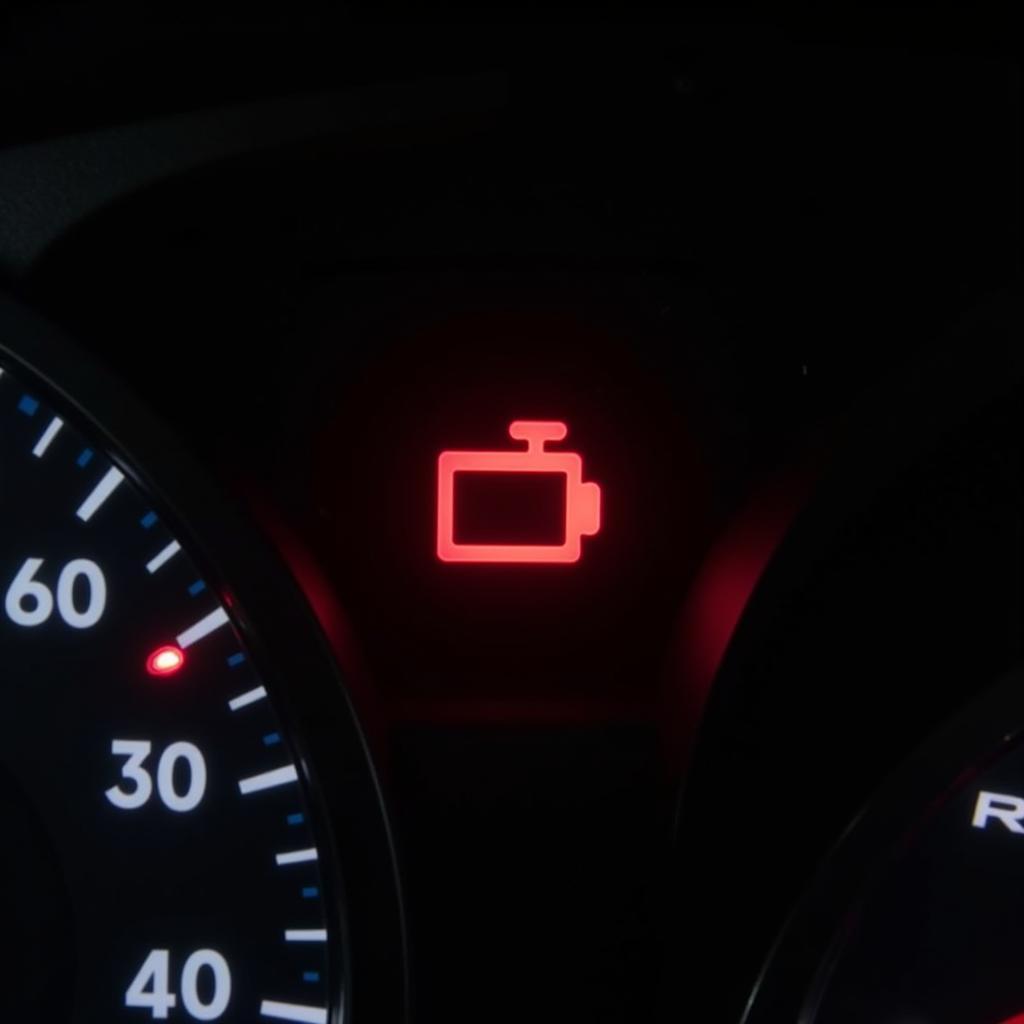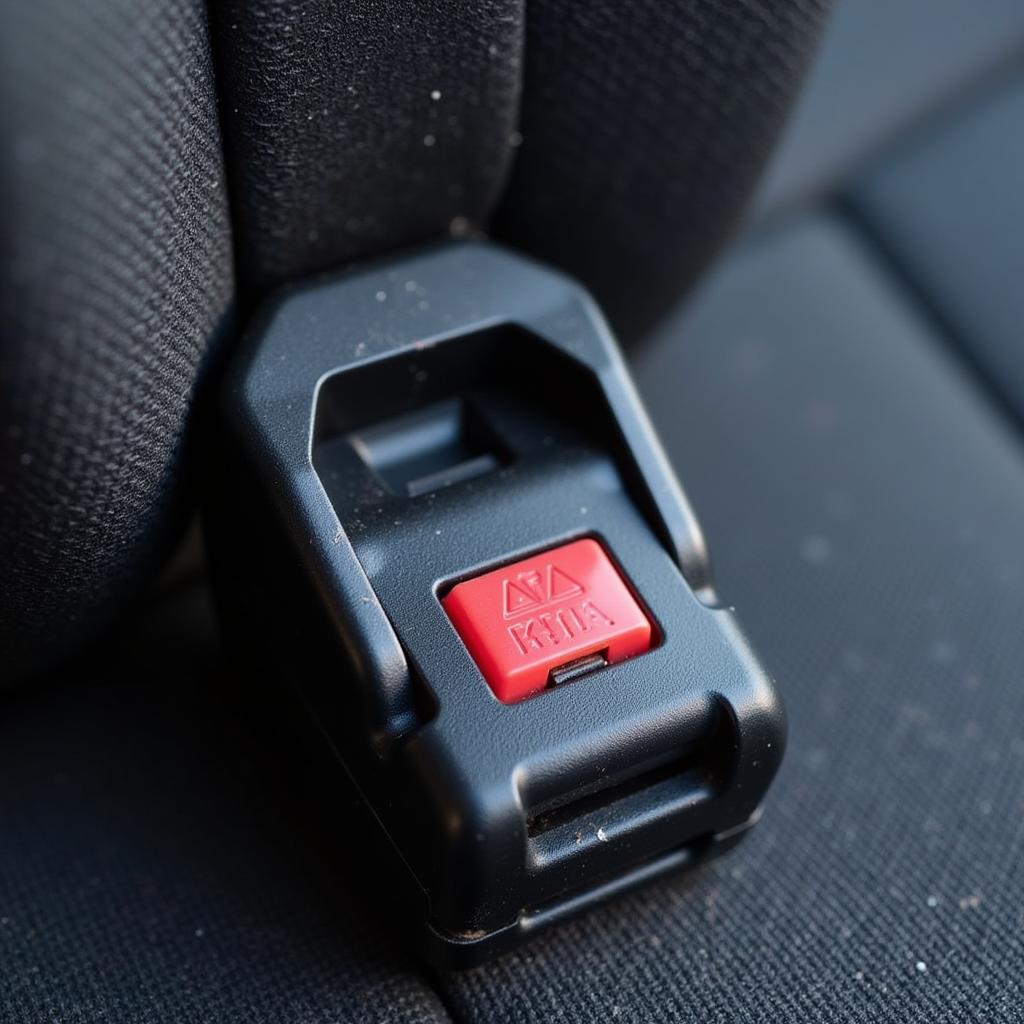That little battery icon glowing on your dashboard? It’s more than just a symbol; it’s a direct line of communication from your car’s electrical system. Ignoring it can lead to inconvenient breakdowns and costly repairs. This article provides a comprehensive guide to understanding the battery sign dashboard light, its various meanings, and how to troubleshoot potential problems.
What Does the Battery Sign on Your Dashboard Mean?
The battery light, often a red battery-shaped icon, indicates a problem with your vehicle’s charging system. It doesn’t necessarily mean your battery is dead, but it does signal that the battery isn’t receiving sufficient charge from the alternator. This could be due to a variety of reasons, from a loose belt to a faulty alternator. Understanding the nuances of this warning light is crucial for maintaining your vehicle’s health and avoiding unexpected issues.
Common Causes of a Lit Battery Light
Several factors can trigger the battery sign dashboard warning. Some of the most common culprits include:
- Faulty Alternator: The alternator is the heart of your car’s charging system. If it malfunctions, the battery won’t receive the necessary charge.
- Loose or Damaged Alternator Belt: This belt drives the alternator. If it’s loose or broken, the alternator can’t function properly.
- Corroded Battery Terminals: Corrosion can disrupt the flow of electricity between the battery and the rest of the system.
- Bad Battery: While less common, a failing battery can also trigger the warning light.
- Wiring Issues: Problems with the wiring connecting the alternator, battery, and other components can also cause charging issues.
 Illuminated Battery Light on Car Dashboard
Illuminated Battery Light on Car Dashboard
Troubleshooting the Battery Sign Dashboard Light
Seeing the battery light illuminate can be concerning, but a systematic approach can help pinpoint the issue.
- Check the Alternator Belt: Inspect the belt for any signs of wear, fraying, or looseness. If the belt is broken, replacement is necessary.
- Inspect Battery Terminals: Look for any corrosion or buildup on the battery terminals. Clean them with a wire brush and baking soda solution.
- Test the Battery: Use a multimeter to check the battery’s voltage. A fully charged battery should read around 12.6 volts.
- Test the Alternator: A multimeter can also be used to test the alternator’s output. Consult your vehicle’s service manual for the proper procedure.
- Check Wiring: Inspect the wiring connected to the battery and alternator for any damage or loose connections.
What to Do When the Battery Light Comes On While Driving
If the battery light illuminates while driving, pull over to a safe location as soon as possible. Continuing to drive with a charging system problem can drain your battery and leave you stranded.
“A lit battery light requires immediate attention,” cautions automotive electrical expert, David Miller. “Continuing to drive can damage other electrical components and lead to a complete system failure.”
Remote Diagnostics and Software Solutions
Modern vehicles utilize sophisticated electronic systems. Often, remote diagnostics and software programming can address underlying issues related to the battery warning light. This involves connecting your vehicle to specialized diagnostic equipment that can identify software glitches or communication errors within the charging system.
“Remote diagnostics and software updates have revolutionized automotive repair,” says Sarah Chen, a lead software engineer specializing in automotive systems. “They offer a faster and more efficient way to identify and resolve complex electrical problems.”
Conclusion
The battery sign dashboard light is a critical warning sign that should never be ignored. Understanding its meaning and taking appropriate action can prevent costly repairs and ensure your vehicle’s reliable operation. By following the troubleshooting steps outlined above and considering remote diagnostic options, you can effectively address the underlying problem and keep your car running smoothly. Don’t underestimate the importance of this small but significant warning light – it could save you from a major headache down the road.



